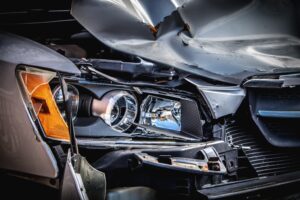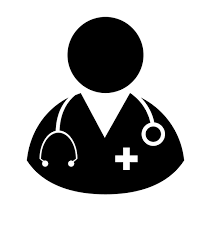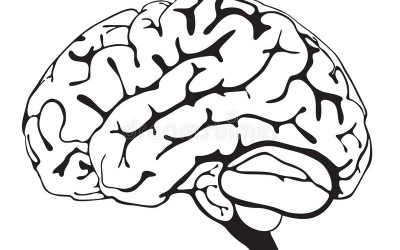Three-Car Accidents: Who Pays?

It can be challenging to determine liability in a standard car accident that involves two vehicles. Weather conditions, road obstructions, and vehicle speeds are all relevant for discovering who is at fault.
The process for establishing responsibility gets even more complicated in a three-car accident.
This article will cover some of the most common three-car accident scenarios, discuss how insurance companies determine liability, and go over some factors that can influence who pays in a three-car accident.
What is a Three-Car Accident?
Collisions involving three vehicles are known as three-car accidents or chain-reaction crashes. The term “chain reaction” refers to how these accidents usually happen; two cars collide, and either the force of the first crash or the disabled vehicles lead to collisions with more vehicles, creating a chain reaction. Often called “pileups” or “multi-car accidents” in the news, these types of car accidents typically occur in high-traffic areas, like highways or intersections.
To help you get a better idea of three-car accidents, here are a few common scenarios:
Scenario 1: Rear-end accident
Vehicle 1 and Vehicle 2 come to a complete stop at an intersection. Vehicle 3 doesn’t stop in time and hits Vehicle 2. This collision forces Vehicle 2 to crash into Vehicle 1.
Scenario 2: Making a left turn
Vehicle 1 makes a left turn at an intersection and hits Vehicle 2. Vehicle 3 cannot stop in time and crashes into Vehicle 2.
Scenario 3: Changing lanes
Vehicle 1 side-swipes Vehicle 2 when changing lanes, causing Vehicle 2 to collide with Vehicle 3.
Scenario 4: Avoiding an accident
Vehicle 1 swerves into another lane to avoid getting into an accident and hits Vehicle 2. Vehicle 3 fails to stop in time and hits Vehicle 2.
When numerous vehicles are involved in a car accident, the increased amount of broken glass, flying debris and twisted metal frequently leads to deadlier results than single or even two-car collisions. There are countless scenarios that can lead to a three-car accident. These are just a few of the most common situations.
Common Causes of Multi-Car Accidents
According to the Canadian Transportation Safety Board, there are 160,000 car accidents in Canada every year, of which 90% are the result of human error. Collisions involving multiple vehicles often start with a single compounding incident, such as:
- Speeding
- Tailgating
- Distracted driving
- Failure to signal
- Disobeying a traffic control device
- Driving while intoxicated
The common factor in multi-car accidents is the presence of traffic congestion. When more drivers are on the road in a given area, there is more opportunity for human error. Winter weather conditions are also a contributing factor to three-car accidents. Between the months of December and January, automobile accidents typically increase by an average of 3.1-4.7%, with Canadian insurance providers reporting a 49% rise in claims.
How Does Insurance Determine Liability?
Determining fault in any motor vehicle collision is dependent on the individual circumstances of the accident. After reporting an accident to your insurance company, an adjuster will use Fault Determination Regulations under the Nova Scotia Insurance Act along with the Nova Scotia Motor Vehicle Act to determine who is at fault for the incident. These rules use diagrams to cover more than 40 accident situations that can be applied to almost every possible road collision scenario.
In a car accident claim involving two vehicles, one driver is usually responsible for causing the accident. Generally, the same is true for a three-vehicle crash. While multiple vehicles are involved, the driver responsible for the initial impact will be the one at fault for the accident.
Take, for example, the rear-end accident described in scenario one. In this case, Vehicle 3 started the accident by crashing into the back of Vehicle 2, leading to the collision with Vehicle 1. Although Vehicle 1 and Vehicle 3 never made any contact, Vehicle 3 would likely be liable for causing the crash that started the three-car accident.
However, it’s possible that Vehicle 2 could be partially responsible if the driver stopped too close to Vehicle 1 in front. It’s also possible for the driver of Vehicle 1 to be responsible for a three-car accident. If the line of cars had started moving and Vehicle 1 stopped suddenly, the cars behind could collide.
An important detail to remember is that fault determination regulations don’t consider road conditions, visibility, the actions of pedestrians, or weather conditions. These rules only account for the positions and movement of the vehicles involved in the accident, in addition to the traffic regulations in the location where the accident happened. Most people are surprised to learn how these regulations are applied, especially if the three-car accident was caused by one of the factors excluded from fault determination.
Insurance companies typically hold out on settlements until they complete a thorough investigation of the accident. However, suppose there are contributing factors that the insurance adjuster didn’t consider. In that case, a car accident lawyer (also called a personal injury lawyer) will review the evidence and may interpret the circumstances that led to a three-car accident differently than the insurer.
Evidence in a Three-Car Accident
As mentioned above, the process of establishing who is responsible for a car accident is challenging, especially when more than two vehicles are involved in the crash. Here is some of the evidence a car accident lawyer will review to help determine who is at fault for a three-car accident.
Police Reports: In Nova Scotia, a police report is required by law if there is more than $2,000 worth of property damage to either vehicle. Police reports include details on the date, time, and location of the accident, the contact information of all parties involved, a description of how the accident happened, and details of damages and potential injuries. Additional crash features are also included in police reports, such as the speed limit, number of lanes, traffic lights, hazards on the road, and any additional contributing factors.
Witness Statements: Police reports should also include statements from people who saw the accident happen. Witness statements can be a valuable indicator of who is at fault for causing the three-car crash. In addition to being listed in the police report, it’s a good idea to collect contact information from witnesses yourself. The insurance company or car accident lawyer may need to contact witnesses regarding your claim or personal injury lawsuit.
Vehicle Damage: The damages to your vehicle and others can help experts recreate what happened in the car accident. An initial assessment of damages to all vehicles involved in the accident will be included in the police report. Insurance companies will suggest that each driver bring their car to a body shop for a thorough investigation of damages to get an accurate estimate for the cost of repairs.
Medical Reports: Injuries caused by a car accident are typically examined and documented by a medical professional at the scene. Subsequent medical examinations are performed by your primary physician or specialist to determine the extent of your injuries and treatment protocols. These evaluations may include x-rays, CT scans, MRIs, and neurological tests.
Scene Footage: Photographs of the scene, vehicle damage, and injuries can help a car accident lawyer (sometimes referred to as an insurance claim lawyer) better understand which driver is responsible for the collision and the compensation available. Other evidence from the accident, like weather reports and video footage from traffic cameras and dash cameras, can provide additional details on how the accident happened.
While insurance providers have a duty to act in the policyholder’s best interests, they will not advocate for benefits and compensation the way a car accident lawyer will. Knowing what steps to take after a car accident and the type of evidence needed to support your claim will help ensure you receive the benefits you are entitled to.
Can You Challenge Fault in a Three-Way Car Accident?
If you are found liable for a three-way car accident, you can challenge the fault determination. In order to dispute or deny fault, you will most likely be arguing against the testimony of the other drivers.
When two or more individuals are responsible for causing a three-way car accident, the burden of proof falls on the defendant (the person who caused the injuries) to show that the plaintiff’s (the injured person) negligent actions contributed to the accident and resulting injuries. To establish negligence, the defendant must prove:
- The plaintiff owed a duty of care to protect themself from getting injured
- The plaintiff breached their duty of care
- This breach of duty caused or contributed to the plaintiff’s injuries
Causation is the muddiest part of proving negligence in a multi-car collision. More than one driver can contribute to the cause of the car accident, and insurance companies will usually argue that someone else caused the accident to reduce payouts. Car accident lawyers and insurance adjusters often hire experts, like accident reconstruction specialists, to understand how the three-car accident occurred. The results frequently involve assigning liability to multiple drivers.
Can More Than One Driver Share Liability?
Some three-car accidents do not result in assigning fault to a single driver. Sometimes, multiple drivers share fault for causing the crash. In scenario four mentioned above, Vehicle 1 tries to avoid getting into an accident by swerving into another lane but ends up colliding with Vehicle 2. Vehicle 3 doesn’t stop in time and hits Vehicle 2. Even though Vehicle 1 changed lanes to prevent a collision, they will likely share responsibility for the car accident with Vehicle 3 that failed to stop.
In cases with shared liability, each driver’s involvement in the accident is expressed as a percentage. Sticking with scenario four, the insurance company (or courts in the instance of a personal injury lawsuit) could assign fault at 75% for Vehicle 1, 25% for Vehicle 3, and 0% for Vehicle 2. The percentage of fault is then applied to awarded damages as a reduction in compensation. For example, if each driver incurred $50,000 in damages, the 75% at-fault driver would receive $12,500, the 25% at-fault driver would receive $37,500, and the 0% at-fault driver will receive the full $50,000. This type of shared liability is referred to as contributory negligence.
Who Pays After a Three-Car Accident?
The insurance company of any driver considered to be at fault in a multi-car accident will pay damages. Even when liability for a car accident is shared, navigating through the payout of multiple insurance policies can be complicated. In some cases, the injured victim(s) may need to file a claim with the Facility Association of Nova Scotia if one or more of the at-fault drivers doesn’t have insurance.
Regardless of who is at fault, every auto insurance policy in Nova Scotia includes Section B Benefits that entitle insured drivers to recover up to $50,000 in medical expense coverage. All medical treatments and associated services deemed necessary by the injured person’s physician usually fall under Section B, including:
- Ambulance services
- Surgical treatment
- Chiropractic treatment
- Dental reconstruction
- Hospital fees (generally not applicable in Canada)
- Psychological counselling
- Physical therapy
- Occupational therapy
- Massage therapy
- Medication
- Acupuncture
- Nursing care
- Funeral expenses
- Death benefits
- Medical equipment
Section B also provides income replacement (called weekly indemnity benefits) for those who are unable to work due to injuries. Weekly indemnity benefits can cover up to 80% of your regular wages or up to $250 per week, whichever is less.
Can Three-Way Car Crashes Be Avoided?
Let’s face it—accidents happen. While it is impossible to control all the factors involved in a three-way car accident, there are steps you can take to protect yourself from falling victim to one.
- Use the three-second rule to keep a safe distance between each vehicle. Increase the stopping distance for poor weather or road conditions, or when visibility is reduced.
- Always use a turn signal when turning or changing lanes.
- Avoid driving faster than the posted speed limit, especially in bad weather.
- Don’t get distracted. If the driver ahead of you stops suddenly, it only takes a second or less of not paying attention to rear-end their vehicle.
- Don’t drive when drowsy. According to the Canadian Association of Chiefs of Police report, 20% of fatal collisions are caused by drowsy drivers.
Even though multi-vehicle accidents are less common than those involving two cars, they happen more frequently than you may think. If you have suffered injuries in a three-way car crash, a car accident lawyer can help build a case to improve your chances of recovering the compensation you deserve. Book a free case review with Valent Legal today.






















